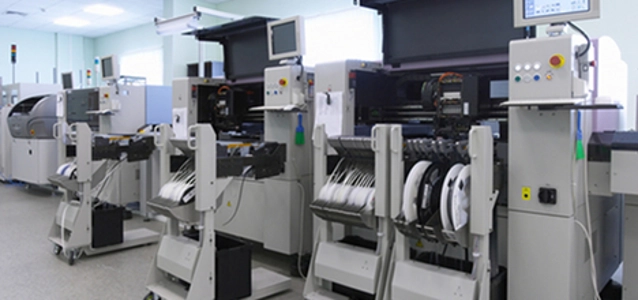
© dimitry romanchuck dreamstime.com
Electronics Production |
Central and Eastern Europe emerge as strong bases for EMS
Cost reduction is the most important driver for the outsourcing market. The electronics manufacturing services (EMS) model yields an average of 10% to 15% in savings, which drives outsourcing from OEMs to EMS providers.
By outsourcing, OEMs can reduce their capital expenditure and investments on property, plant, equipment, automation systems, infrastructure, and thereby convert fixed costs to variable costs.
New analysis from Frost & Sullivan, Analysis of the European Electronic Manufacturing Services (EMS) Provider Market, finds that the markets earned revenues of $ 45.80 billion in 2011 and estimates this to reach $ 68.19 billion in 2016.
“The outsourcing trend in industrial, medical, automotive and other sectors is set to offer more business opportunities for EMS providers in Europe,” notes Frost & Sullivan Research Analyst Nupur Sinha. “Cost savings is one of the key factors for medical equipment and automotive electronics OEMs favouring outsourcing.”
OEMs may outsource some or all of their lower-margin activities, ranging from procurement, PCB and box assemblies, testing, and even the repair and warranty of sold products. By doing so, they can focus on the R&D of new products and the refinement of their current products, and can participate more aggressively in sales and marketing, where they can provide differentiation. OEMs can also access the advanced manufacturing, equipment, facilities and logistics capabilities set up by EMS providers without additional capital investments.
Central and Eastern Europe (CEE) is increasingly becoming a key region for the European electronics industry. Many leading multinational OEMs and EMS companies have capitalised on the cost-competitiveness offered by this region to minimise operational and manufacturing costs associated with volume manufacturing of electronic assemblies.
“CEE has also started electronic manufacturing for niche markets like automotive, medical, and industrial,” adds Sinha. “Within these markets, the sub-assemblies with lower profit margins are being manufactured in CEE, rather than in Western Europe, resulting, ultimately, in the expansion of the overall EMS market.”
The most profitable verticals for EMS providers like consumer electronics and telecommunication are marked by stiff competition. The European market is also witnessing greater interest in industrial and medical segments due to the higher profit margins they offer.
“EMS providers in Europe are now focused on improving their manufacturing techniques, as some segments involve the usage of complex technologies,” remarks Sinha. “Furthermore, EMS providers are increasingly focusing on shorter production runs to suit client requirements.”
However, as European EMS providers attempt to shake off the effects of the recession, they face a potent new threat. China, India and other Asian countries with their advantages of low manufacturing cost, abundant skilled labour and sizeable domestic markets, are starting to gain a competitive edge over their European counterparts in the electronics manufacturing industry.
“China, in particular, will offer a large pool of inexpensive and skilled labour,” cautions Sinha. “This will pose a serious threat to European EMS providers.”



